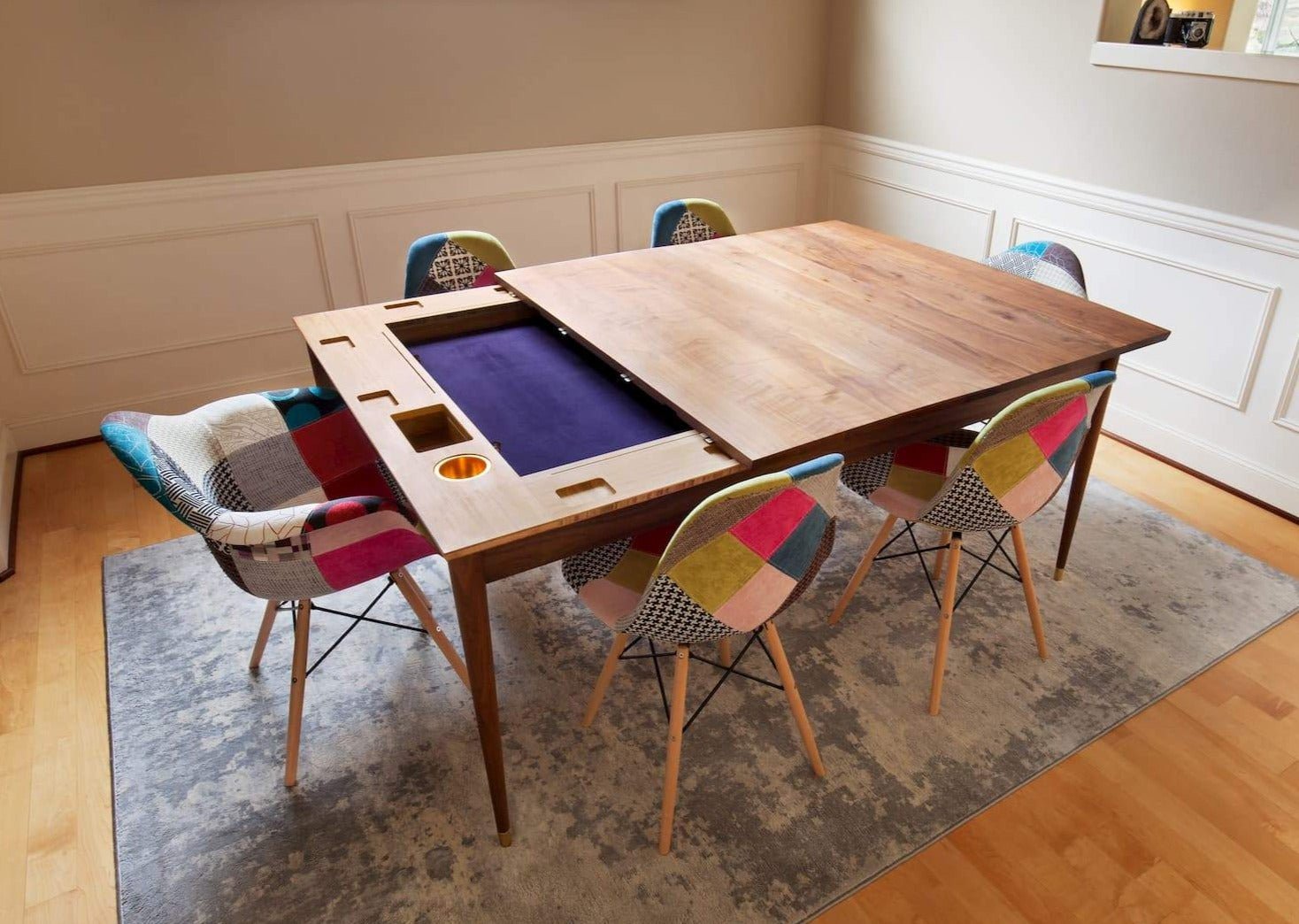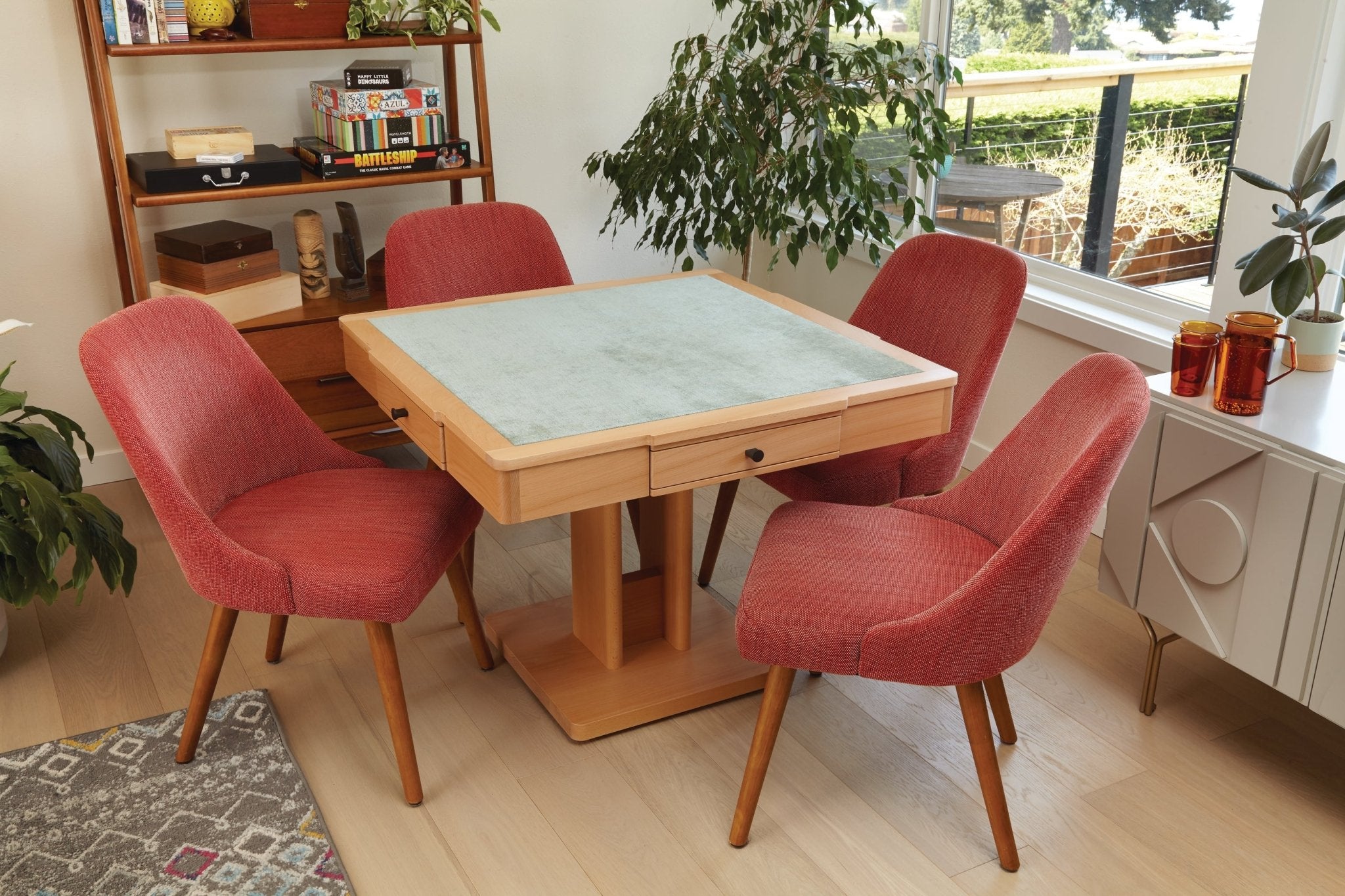From Concept to Completion: How Board Games Are Made
Board games and custom board game tables are more popular today than ever. On Average, the board game market is worth $3.2 billion annually. The rise of COVID-19 has increased demand for games, with projected sales reaching over a staggering $8 billion by the end of 2021. However, as popular as they are, most people who play board games never think about how board games are made.
Creating a board game is a meticulous process that typically begins with a concept and continues with assimilating the game pieces and all the components, drawing up the game board layout, and, finally, manufacturing the game.
Whether it's a board or card game, the finished product is designed to appeal to a certain audience based on demographics, interests, style, and desired level of competition. Below, we look at how board games are made and a general overview of the board gaming industry.
Coming Up with Board Game Ideas
Actress Elizabeth Banks was planning a bachelorette party for a friend when inspiration struck. As she was trying to come up with game ideas, she thought of 'Unveiled,' the "bachelorette bash in a box." The game is built on a simple truth-or-dare motif in which participants unveil their darkest (and, in many cases, naughtiest) secrets.
This is how most board games are created - that "a-ha" moment in which a person proclaims, "That would make a great board game!" However, building on the initial idea can be challenging. While the process would seem to move forward, adding board game elements as you go, most creators actually start with the end goal in mind and work backward.
From a manufacturing standpoint, the components start to emerge, such as
- Game pieces
- Game board
- Cards
- Dice
- Token
- Miniatures
From there, the creator may come up with a board game design prototype, usually made out of paper. The game board prototype consists of drawings, setting details, improvised game pieces, and homemade elements.
Afterward, putting the game together becomes a process of addition and elimination and play testing. Some ideas are developed, while others are abandoned. The process is usually the same for board games and card games.
What Makes a Great Board Game?
Just like other games, there are certain key items that game developers consider when creating a board game. These items are common in popular board games regardless of what type of game it is.
A Clear Objective
The most important element in any board game is that the team needs to have a clear idea of exactly what the game is about and the end goal. The objective of any good game must be clear, concise, intuitive, and memorable. It should also be at the top of the rulebook in paragraph number one.
Clear and Firm Rules
With all the banter about people breaking the rules, most board game enthusiasts like the rules and expect others to follow them. Rules make games more fun and promote more competition. Without the rules, people engage in free play, which is never enjoyable.
Inertia
Nothing is worse than a game that drags on with no end in sight. Games need to keep a steady pace with interesting benchmarks to keep the team engaged. Interactions need to feel meaningful and important along the way. You want to leave players wanting more when the game is done.
Strategy
Few game lovers enjoy Go Fish after the first round or two. Why? Because the game is won on chance alone. The most stimulating games are the ones that involve a higher level of strategy. Players want to feel like they can refine their skills each time they return to the game. If the game is won on sheer luck, they will likely not return.
Putting Together the Board Game Pieces
Once the initial board game concepts are fleshed out, it's time to determine what pieces go into the game. Keep in mind that a good board game piece is iconic. It's often the flagship of the game and the one component that many players identify with. Some of the most popular games have iconic board pieces - Monopoly, Life, Chess, Battleship, and Clue.
Some of the most common pieces in board games include:
Game Board

The game board is the centerpiece of any board game. It consists of a cardboard playing surface that provides the setting and direction of the game. Game boards also contain decorative designs, instructions, graphics, and images that guide the players along. Using game boards, players should be able to get through a single game from start to finish.
Playing Cards

Cards can include a variety of card types such as a printed sheet, printed paper, or standard thin cardboard. Cards can be the only component in a board game, or they can be one of many pieces. For instance, in Monopoly, cards share the board with other pieces to engage the players.
Dice

Few board pieces keep players engaged like dice. Players can't wait to roll them and see the outcome. These pieces are made from injection-molded plastic, but can also be made from a zinc-alloy metal during the manufacturing process. They come in many different sizes, patterns, and colors. Like bowlers and pool sharks, tabletop gamers often carry their own bags of dice.
Tokens
Tokens is somewhat of an umbrella term for pieces that may include coins, chips, chits, or even cubes. Tokens often carry some type of value that gives a player a competitive edge. In some games, tokens are the same thing as money. They can be used on game boards as points. They can be used during gameplay to help a player win the game.
Miniatures
Miniatures are some of the most fun components of any board game and often a central part of the game's theme. Characters can be made from different types of materials such as metal, wood, or plastic. Developers often create miniatures that players can identify with. For example, in the world of Dungeons and Dragons, miniatures have a mythical aura and appear to come out of the middle ages.
Board Game Manufacturing
The final step in creating board games is manufacturing. Although manufacturers are located throughout the world, the method of bringing the materials together in production is similar. The process involves four main steps.
Step 1: Print
Printing includes the cardboard where the game is played, as well as other components such as cards, scorecards, instructions, and any other article that requires paper. The production is done on offset machines that ensure optimum printing quality. The large sheets are printed on the 70×100 size machine and the complements of the sets, cards, adhesives, or aids on an auxiliary GTO machine.
Step 2: Component Production
The longest step in production is creating the pieces. The components are manufactured on site in various ways depending on the material and design. Plastic pieces are manufactured using a method called plastic injection. Melted plastic is injected into a customized mold, generally made of two parts.
When the material becomes cool and solid, the molding plates separate, and the piece is released. If the piece is complex, it may need to be assembled. After the product is shaped and assembled, the last step in production is decoration. Any painting, print or engraving will be produced on this process before the items are placed in the box.
Step 3: Handling
Once all the components are prepared and production is complete, all the parts are arranged neatly in the package. The product is put in its box, packed with paper, and placed on pallets, ready to be shipped to family or friends. Most board games are built to last. However, paper packaging is often created in production that protects all the games pieces
Step 4: Distribution
Once production and packaging is complete and the board game is safely in the box, the last step in the process is to ship the board game to its destination. Most board games are shipped in the original box to wholesalers, retailers, and online distributors. Game enthusiasts can purchase them online or in the store.



